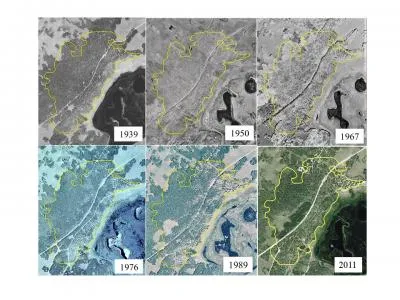Pando, One of the World’s Largest Organisms, Is Dying
Mule deer and cattle are eating saplings before the clonal grove can regenerate
/https://tf-cmsv2-smithsonianmag-media.s3.amazonaws.com/filer/a6/85/a685500e-07bf-4565-8f7d-8270a4ecc171/182297_web.jpg)
Sweeping across 107 acres of Utah’s Fishlake National Forest is one of the world’s largest organisms: a forest of some 47,000 genetically identical quaking aspen trees, which all stem from a single root system. Pando, as the organism is known (its name is Latin for “I spread”), has been growing for at least 80,000 years. But according to Yasmin Tayag of Inverse, the grove’s health has declined dramatically over the past few decades. Pando, a recent study has found, is dying.
Weighing 13 million pounds, Pando is the world’s largest organism by mass (Oregon’s “humungous fungus” spans a greater distance). Quaking aspens can reproduce by disseminating seeds, but more frequently, they send up sprouts from their roots and form a mass of trees aptly known as a “clone.”
The new study, published in PLOS One, shows that Pando isn’t regenerating in the way that it should. Researchers assessed 65 plots that had been subjected to varying degrees of human efforts to protect the grove: some plots had been surrounded by a fence, some had been fenced in and regulated through interventions—like shrub removal and selective tree cutting, and some were untouched. The team tracked the number of living and dead trees, along with the number of new stems. Researchers also examined animal feces to determine how species that graze in Fishlake National Forest might be impacting Pando’s health.

Their findings were pretty grim. In most areas of the grove, there are no “young or middle-aged trees at all,” lead study author Paul Rogers, an ecologist at Utah State University, tells Yasemin Saplakoglu of Live Science. Pando, he adds, is made up almost entirely “very elderly senior citizens."
Mule deer and cattle appear to be the primary cause of Pando’s decline. The animals are chomping off the tops of saplings at alarming rates, leaving the grove with few opportunities to regenerate.
But really, it isn’t the animals that are to blame. Under a U.S. Forest Service grazing allotment, ranchers are allowed to let their cattle graze at Pando for about two weeks every year, according to the study. Another major problem is the lack of apex predators in the area; in the early 1900s, humans aggressively hunted animals like wolves, mountain lions and grizzly bears, which help keep mule deer in check. And much of the fencing that was erected to protect Pando isn’t working; mule deer, it seems, are able to jump over the fences.
“People are at the center of [the] failure,” Rogers tells Yessenia Funes of Earther.
As part of the new study, the team also analyzed aerial photographs of Pando taken over the past 72 years. The images drive home the grove’s dire state. In the late 1930s, the crowns of the trees were touching. But over the past 30 to 40 years, gaps begin to appear within the forest, indicating that new trees aren’t cropping up to replace the ones that have died. And that isn’t great news for the animals and plants that depend on the trees to survive, Rogers says in a statement.
Fortunately, all is not lost. There are ways that humans can intervene to give Pando the time it needs to get back on track, among them culling voracious deer and putting up better fencing to keep the animals away from saplings. As Rogers says, “It would be shame to witness the significant reduction of this iconic forest when reversing this decline is realizable should we demonstrate the will to do so.”